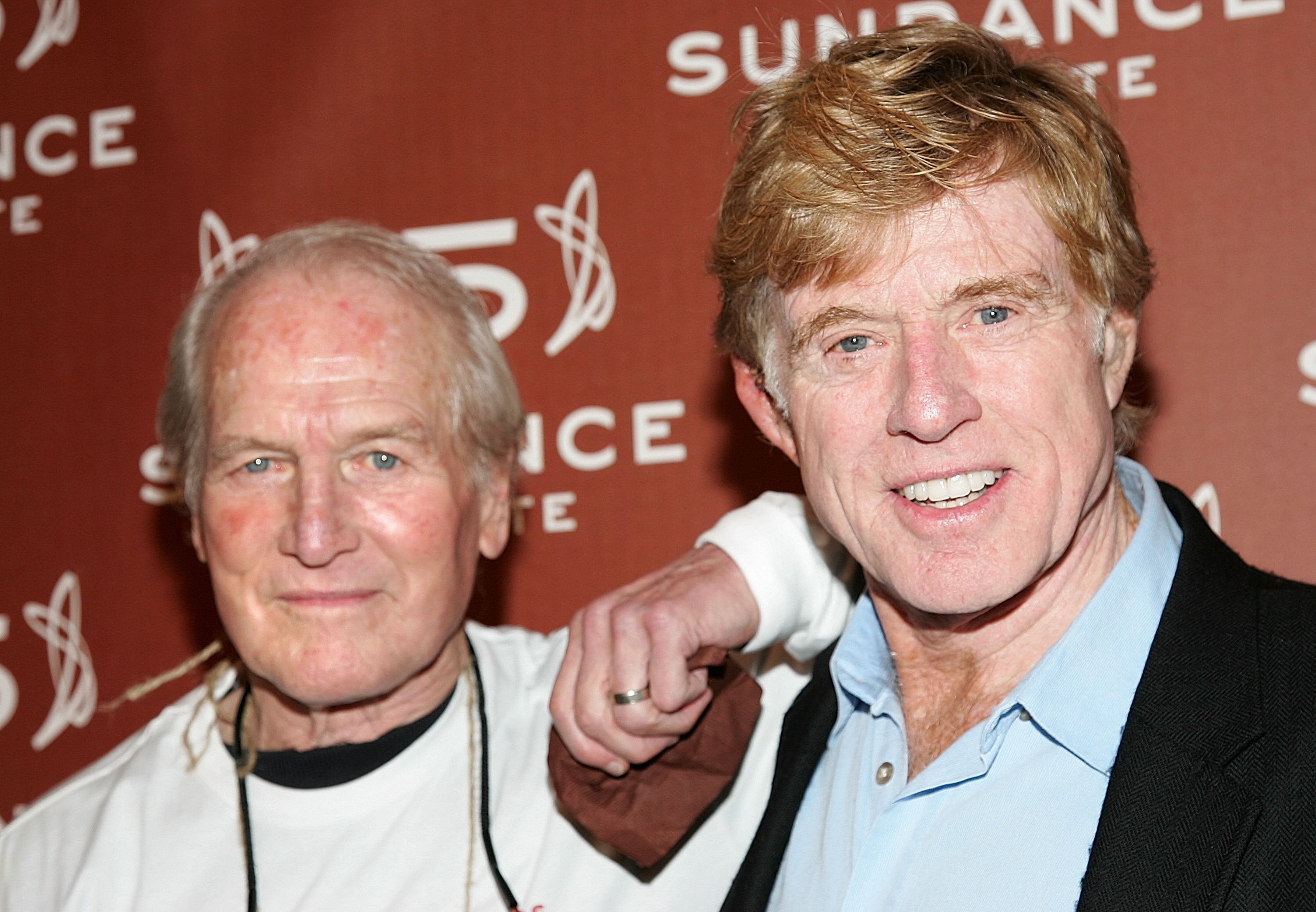In January 1975, when Paul Newman turned 50, his friend Robert Redford sent him an unusual gift. The pair had bonded over their love of fast cars while filming 1969’s Butch Cassidy and the Sundance Kid, and Newman had become enamored of Redford’s extremely rare Porsche 904. Newman started racing professionally soon after, but his petrolhead passion became too much for his younger co-star.
“I started to get bored, because every time we got together all he talked about was racing and cars,” recalled Redford, who died today aged 89, in an interview at the John F Kennedy Presidential Library in 2014. “So I decided to play a joke on him. I called a towing service and said, ‘Do you have any crushed automobiles? Do you have a Porsche?’” As luck would have it, they did have a recently destroyed Porsche, so Redford had the whole thing gift wrapped, tied up with a bow, and sent to Newman’s home in Connecticut.
Redford heard nothing back about his elaborate birthday gag, but a couple of weeks later, a big wooden box turned up in his lobby. After crowbarring it open, he found the remains of the sports car inside, now crushed into a cube. Not someone to be one-upped, Redford called a sculptor he knew to transform the warped metal into a garden ornament and had it placed in Newman’s garden. “And to this day,” Redford said. “Neither Paul nor I ever spoke about it.”

Redford and Newman, it seems, didn’t need to speak in order to tickle one another. The pair enjoyed one of Hollywood’s most famous and enviable friendships, but unusually, it wasn’t one forged from particularly frequent working collaborations. After playing Wild West outlaws Butch and Sundance, they shared the screen just once more, in 1973 crime caper The Sting. While it certainly helped that their two joint ventures were both certified New Hollywood classics, it was their enduring relationship off-screen that became legendary in its own right. They had a genuine “bromance” long before the word was even coined.
The pair had first met in 1968, when Butch Cassidy and the Sundance Kid director George Roy Hill introduced them in New York City. Redford was still in the early days of his career as a leading man, but had been well received in the previous year’s romantic comedy Barefoot in the Park opposite Jane Fonda. Newman was one of the biggest stars in the world and was already locked in for the role of Butch, while the studio struggled to find someone to pair him with: Jack Lemmon, Steve McQueen and Warren Beatty had all turned it down. “When the studio didn’t want me for the film — it wanted somebody as well known as Paul — he stood up for me,” remembered Redford in an article for Time after Newman’s death in 2008. “I don’t know how many people would have done that; they would have listened to their agents or the studio powers.”

Redford never forgot that Newman, 11 years his senior, had fought for him. After the film was released, Redford moved to Connecticut to be closer to his new mentor. They shared a background in theater and had both worked on Broadway before making the transition to celluloid. “Both of us were fundamentally American actors, with the qualities and virtues that characterize American actors: irreverence, playing on the other’s flaws for fun, one-upmanship — but always with an underlying affection,” Redford once explained. “Those were also at the core of our relationship off the screen.”
Their back-and-forth with the crushed Porsche was just one of the many pranks by which the two men showed their affection. While honoring Newman at the Kennedy Center in 1992, Redford recalled the time he had attempted to use him as a reference while applying for an apartment in New York. He produced the letter Newman had written to the building’s board, and read it aloud to much laughter (and Newman’s obvious enjoyment): “To whom it may concern, Mr Robert Redford has owed me 120 bucks for over three years. He will not assume his obligation under threat of loss of friendship, honor, loyalty. I cannot in good conscience recommend him for anything.”
Aside from their good-natured ribbing of one another, the two men also shared a belief in the importance of giving back. While the elder star had his Newman’s Own food brand, which donates 100 percent of its profits to charity, and his Hole in the Wall camps for children with serious illnesses, Redford started the Sundance Institute and the independent film festival that shares its name.
-and-Robert-Redford.jpeg)
Redford hoped to share the screen with Newman one last time, and planned 2015’s A Walk in the Woods as a way of reuniting them. “We always had been looking for a third piece to do,” Redford said at the time. “But it was hard because we didn’t want to duplicate anything.”

Watch Apple TV+ free for 7 day
New subscribers only. £9.99/mo. after free trial. Plan auto-renews until cancelled.
Try for free
ADVERTISEMENT. If you sign up to this service we will earn commission. This revenue helps to fund journalism across The Independent.

Watch Apple TV+ free for 7 day
New subscribers only. £9.99/mo. after free trial. Plan auto-renews until cancelled.
Try for free
ADVERTISEMENT. If you sign up to this service we will earn commission. This revenue helps to fund journalism across The Independent.
He continued: “But we also wanted to try to find a project that would still have the relationship they had in the other two. The first film we did, because I was young, I played a more dour character and Paul was the lively one. And then the next time out on The Sting, he was the cool guy and I was the lively one. So we were looking for a third piece that would be different in terms of story but would have the same kind of characters.” In the end, Newman’s health declined before production could begin, and his role was eventually taken by Nick Nolte.
Shortly before Newman’s death from lung cancer, Redford received a letter from his longtime friend and co-star. In it, Newman addressed many of the things they’d left unsaid for so many years. He thanked him for his companionship and support, and closed with a line Redford would never forget: “You were the Sundance to my Cassidy — always.”




